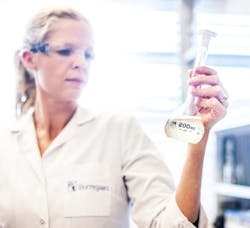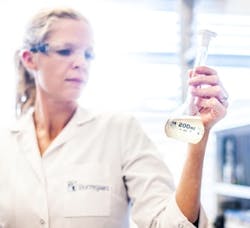Norway Fancies Fungus
For its first project, a newly established research institute in Norway plans to mimic the chemistry of the brown rot fungus to improve biorefining processes.
Figure 1. Borregaard is keen on finding new ways to isolate lignin. Source: Borregaard.
The Norwegian Institute of Bioeconomy Research (NIBIO), launched July 1st with the merger of the Norwegian Institute for Agricultural and Environmental Research, the Norwegian Agricultural Economics Research Institute and Norwegian Forest and Landscape Institute.
The new 4-year project, called BioMim, has attracted $4 million in funding from the Research Council of Norway and expertise from around the world. Industrial partners include biorefinery specialist Borregaard, Sarpsborg, Norway, and sustainable wood products company Kebony, Skien, Norway. NIBIO and the two firms also hope to develop better ways to protect wood products, something that Kebony already carries out using its own bio-based liquids to enhance the properties of sustainable softwoods.
Brown rot fungi are considered among the most important agents involved in the biodegradation of wood products and the dead wood in coniferous ecosystems. Research (Schultz, T., et al., in “Deterioration and Protection of Sustainable Biomaterials,” ACS Symp. Series, American Chemical Society, Washington, D.C., 2014) suggests brown rot attack involves a two-step process.
“A key part of the work will focus on the breakdown of the cellulose portion of biomass to produce component sugars that can then be fermented to biofuels. But today, in addition to alcohols, fermentation processes can generate a variety of platform chemicals for use in making, for example, plastics and resins, so this will also be a focus,” says NIBIO project leader Gry Alfredsen.
Wood and other biomass sources consist of two basic chemicals, cellulose and lignin. Separating them is a challenge: “One of the key problems in current biorefinery systems is finding a way to disentangle the lignin, which at the nanoscale forms a tight plastic coating around the cellulose fibers, to thus free up the cellulose for a variety of applications,” explains Barry Goodell, professor of sustainable biomaterials in the College of Natural Resources and Environment at Virginia Tech, Blacksburg, Va., who is working on the BioMim project.
Goodell brings a wealth of expertise to the project. His research interests have focused on advanced-engineered composites using wood and hybrid structural biocomposites, as well as the biodegradation and protection of wood and other structural biomaterials; the production of carbon nanotubes and mesoporous carbon from lignocellulose substrates; and energy applications related to wood and biofiber. The latter involves projects on the bioconversion of cellulose and biofuels production from algae.
The BioMim project will explore two processes. The first is a technology developed by Goodell that borrows from the two-step process brown rot fungi uses to break down woody debris on the forest floor — and that sometimes also damages homes, decks and other structural products. The resulting catalytic process to free cellulose from lignin has already been demonstrated at pilot scale. The BioMim team will expand on this technology, and explore how it can be used efficiently in large-scale biorefineries.
The second part of the process uses an enzymatic system recently discovered by the group’s team member Vincent Eijsink, professor at the Norwegian University of Life Sciences, Ås, Norway. This new enzyme system may permit further deconstruction of the cellulose portion of the wood biomass once freed from the lignin. Makoto Yoshida, associate professor from Tokyo University of Agriculture and Technology, Fuchu, Japan, is one of the BioMim collaborators producing the enzyme. Yoshida began a nine-month sabbatical in Goodell’s lab in July.
“We will combine the catalytic chemistries with the enzyme system, to test the system as a whole,” says Goodell.
Alfredsen was also a visiting scientist on sabbatical in Goodell’s laboratory at Virginia Tech two years ago. She has been following Goodell’s research for some time, and the two recognized the value of a combined international research approach to solve a global sustainability problem on the better utilization of our biomass resources.
While freeing-up cellulose for enhanced utilization is a critical objective of the BioMim project, the other component of wood, lignin, also has many uses, such as emulsions, binders and micronutrients. Borregaard, a global leader in the production of lignin-based products with plants in the United States, as well as worldwide, has great interest in how the BioMim project team can generate lignin in a more efficient manner and generate new types of lignin for products, says Goodell.


